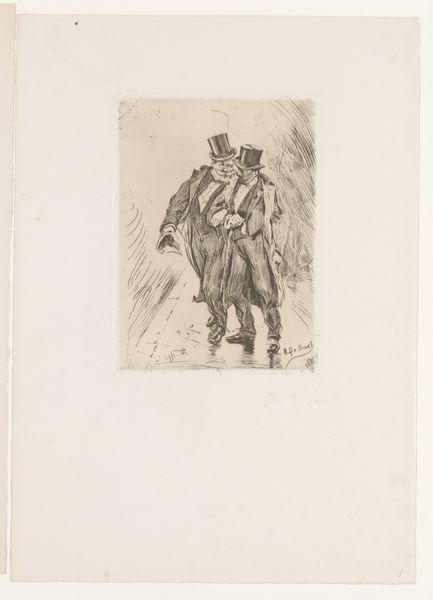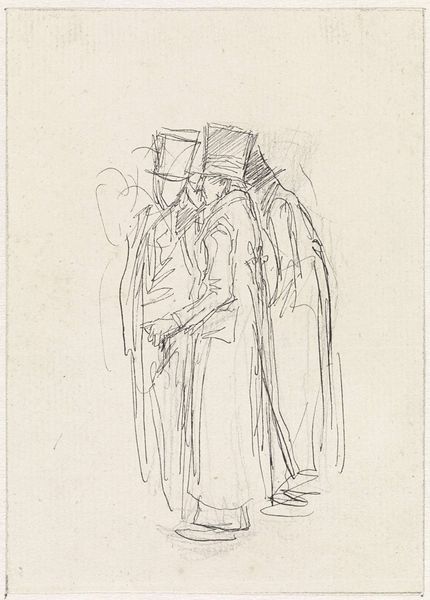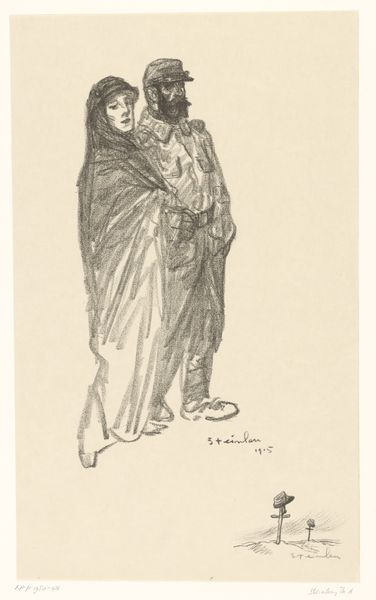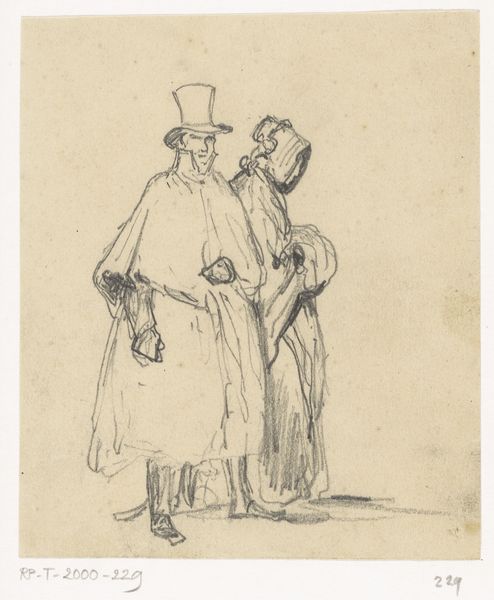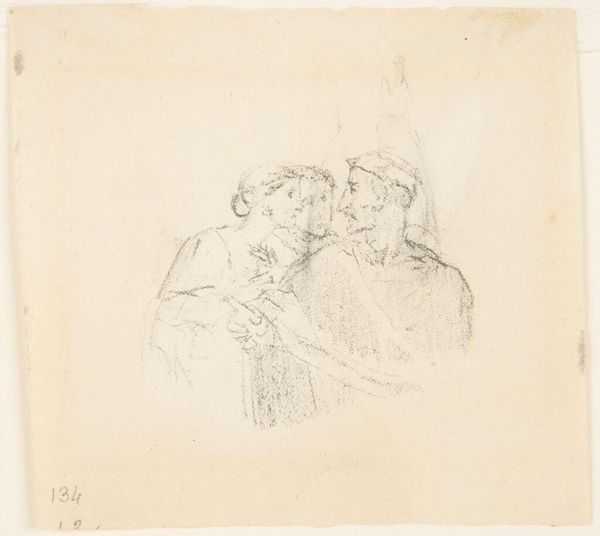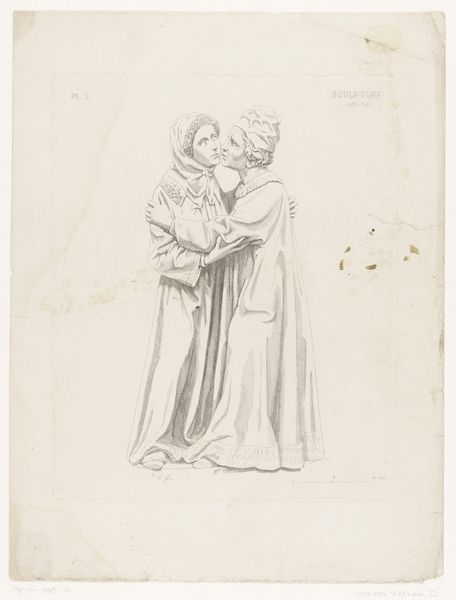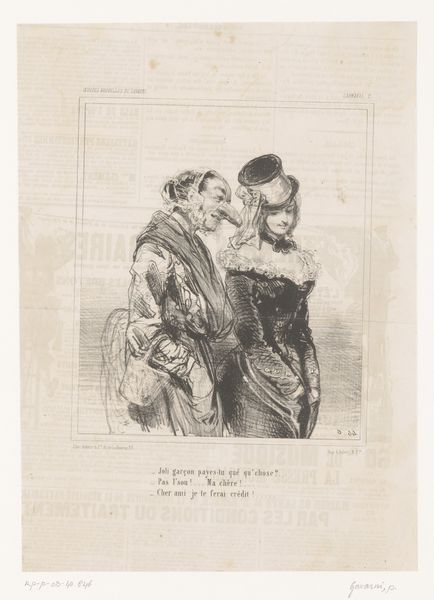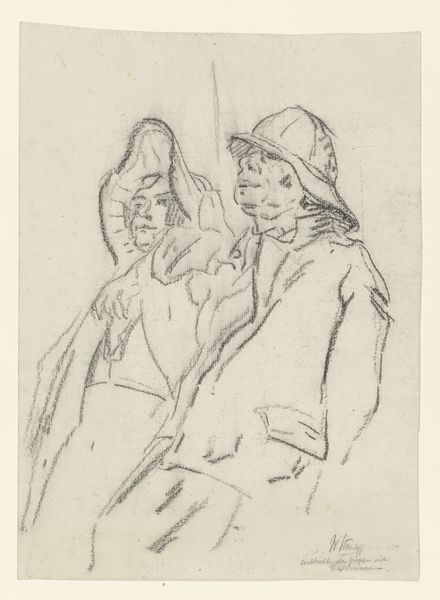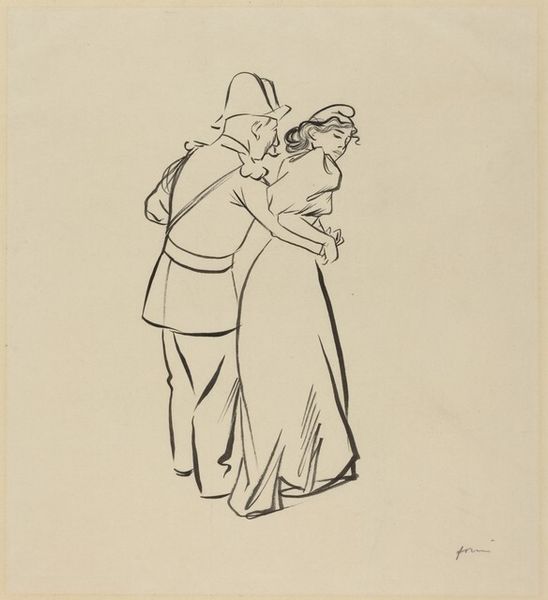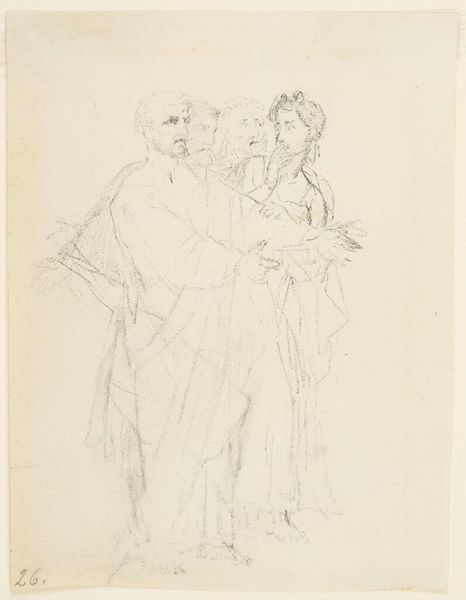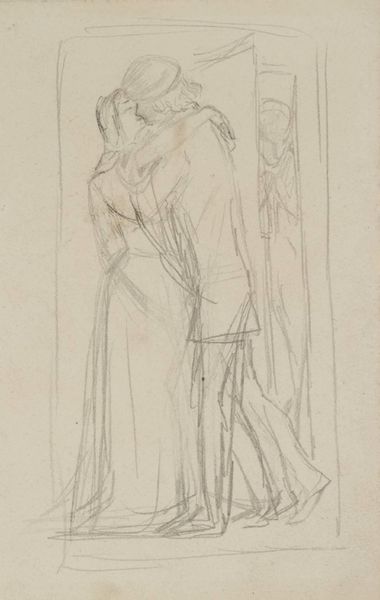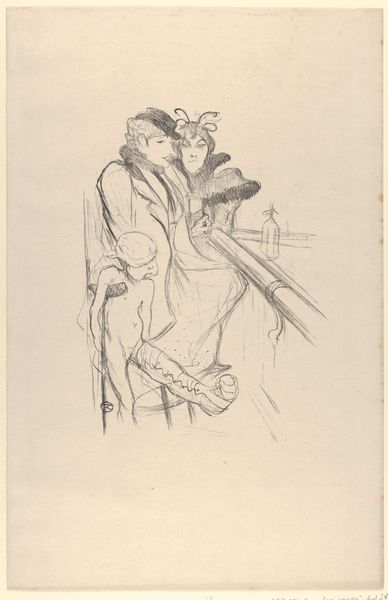
Aid to Those Mutilated in the War, plate one from Actualités 1915
0:00
0:00
drawing, lithograph, print, paper
#
portrait
#
drawing
#
narrative-art
#
lithograph
# print
#
paper
#
expressionism
#
history-painting
#
realism
Dimensions: 288 × 210 mm (image); 453 × 334 mm (sheet)
Copyright: Public Domain
Editor: So, here we have "Aid to Those Mutilated in the War, plate one from Actualités," a lithograph by Théophile Alexandre Steinlen, made in 1915. The drawing presents a soldier on crutches with a woman leaning on him. The tone is incredibly somber; they seem lost in thought. What resonates with you when you look at this work? Curator: The weight of the moment, the human toll of war, is carried in their postures, their very stance. This image, even in its simplicity, uses deeply embedded cultural symbols. Notice how the woman's dark shawl envelops them both, visually linking her to traditional mourning attire. This evokes not just individual grief, but a societal lament. Editor: That's interesting. I hadn’t really considered the shawl beyond just a piece of clothing. Curator: Precisely. Steinlen utilizes clothing to represent shared emotions and experiences. How does the soldier's stance, supported by crutches, resonate with your understanding of sacrifice? Does it evoke any familiar narratives of heroism and loss? Editor: Definitely, it speaks to physical and emotional sacrifice. He's literally leaning on the support. There’s almost a religious quality, thinking of Christ carrying the cross. Curator: The echo of religious iconography isn't accidental. Artists often embed universal narratives of suffering to connect with viewers on a deeply human level. It allows a timeless emotional connection, going beyond the specific event of World War I. It makes their grief, their burden, somehow…universal. Editor: It’s amazing how a seemingly simple drawing can carry such complex meaning. It makes you wonder about all the hidden symbolism in art we overlook. Curator: Absolutely. Images whisper stories, echoing through generations. Understanding those visual cues opens a dialogue with the past and offers a richer understanding of the present.
Comments
No comments
Be the first to comment and join the conversation on the ultimate creative platform.
